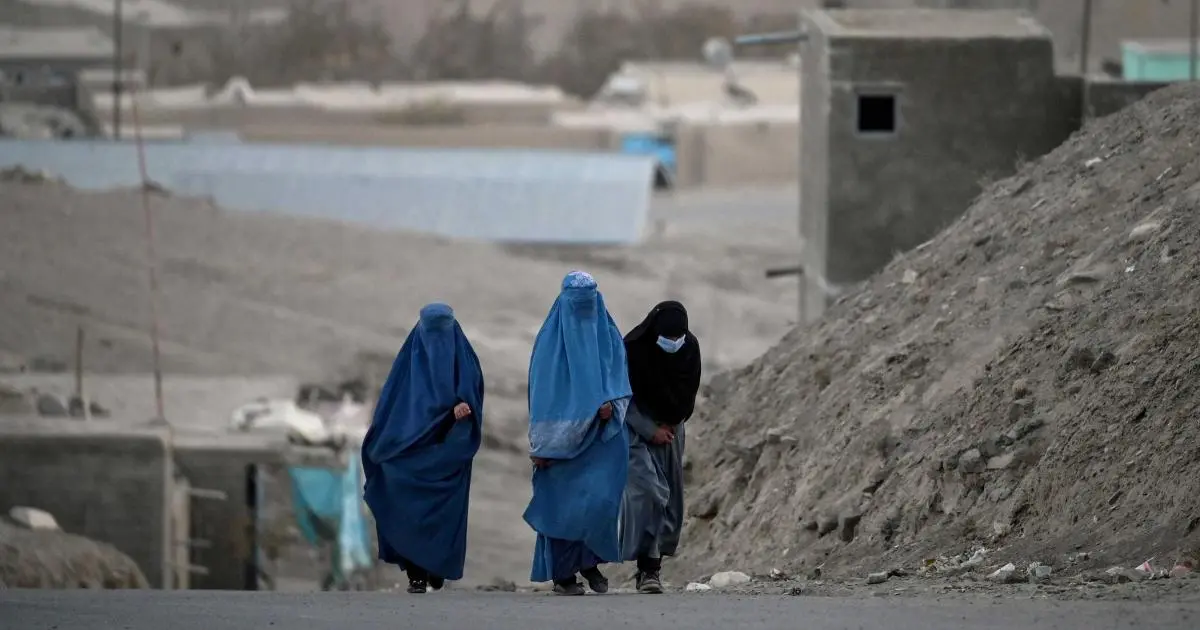In the remote reaches of northern Afghanistan, a young woman named Khushi finds solace and empowerment through the strokes of a pencil on paper. Her self-portrait depicts a figure enveloped within a blue burqa, confined within the boundaries of a cage. This poignant artwork represents not only her creative expression but also her journey toward healing amidst the challenges faced by Afghan women.
Khushi, a 19-year-old resident, was once a university student with dreams of studying law and political science at Balkh province’s primary university. However, her hopes were shattered when the Taliban imposed a decree in December, preventing women from pursuing higher education. This directive had a profound impact on Khushi and countless others who saw their aspirations crumble.
Amidst grappling with her emotional well-being, Khushi turned to art therapy on the recommendation of her psychiatrist. Reflecting on her journey, she reveals, “Confronting my own mental fragility, I found myself overwhelmed with sadness… It felt as if my heart carried a heavy burden, like a caged bird devoid of its joy.” For security purposes, Khushi is identified solely by her first name.
The Taliban’s decision to bar women from attending universities in December 2022 led to unprecedented public demonstrations. This move came after the closure of girls’ high schools and the imposition of restrictions on female humanitarian workers. These limitations on women’s involvement in public spheres have elicited widespread international criticism, with Western governments asserting that such restrictions hinder the recognition of the Taliban’s governance following the withdrawal of foreign forces.
Despite the Taliban’s assertion that women’s rights will be respected within the framework of Islamic law and Afghan tradition, many women, especially those in urban areas, grapple with despair and mental health challenges. The two-decade presence of foreign troops and a Western-backed regime allowed women to seize educational and employment opportunities, leaving them now contending with hopelessness and emotional turmoil.
Khushi’s psychiatrist, who remains anonymous due to security concerns, explains, “Under the regime of the Islamic Emirate (Taliban administration), women have faced an array of restrictions — denied access to universities, amusement parks, and beauty salons, among others. They have been left with little.” The art studios, he adds, offer a lifeline for his patients, providing solace, camaraderie, and a medium for artistic expression.
Khushi, meeting her psychiatrist bi-monthly, highlights the growing demand for these services. Initially attending to four to five patients daily, the psychiatrist now sees 10 to 15, most of whom are women. This surge in demand became evident after the Taliban’s ban on female students attending universities.
With health organizations estimating that half of Afghanistan’s population grapples with psychological distress due to prolonged conflict and instability, mental health struggles have escalated, particularly among women facing restrictions on their education and employment.
In Mazar-i-Sharif, the capital of Balkh, a vibrant art studio serves as a haven. Colorful paintings grace the walls as young women, including Khushi, gather for pencil drawing classes. Many have been directed here by mental health experts, seeking an avenue to alleviate isolation and acquire a new skill, alongside talk therapy and medication.
One participant, a former university student, expresses, “Amidst the depths of desolation, my physician recommended seeking solace in a place that nurtures the soul. I opted for the art studio. Beyond fostering meaningful connections, I’ve discovered solace through the art therapy it offers.” Khushi resonates with this sentiment, elaborating on how art therapy provides solace and a glimmer of hope.
She shares, “Engaging in artistic creation instills a sense of accomplishment within me. It empowers me with resilience, even in the face of life’s letdowns. I maintain my determination and refuse to yield. I cling to the optimism of brighter days ahead.” In a period marked by uncertainty and obstacles, these art studios transform into havens of healing and optimism for Afghan women endeavoring to reclaim their voices and reshape their narratives.




